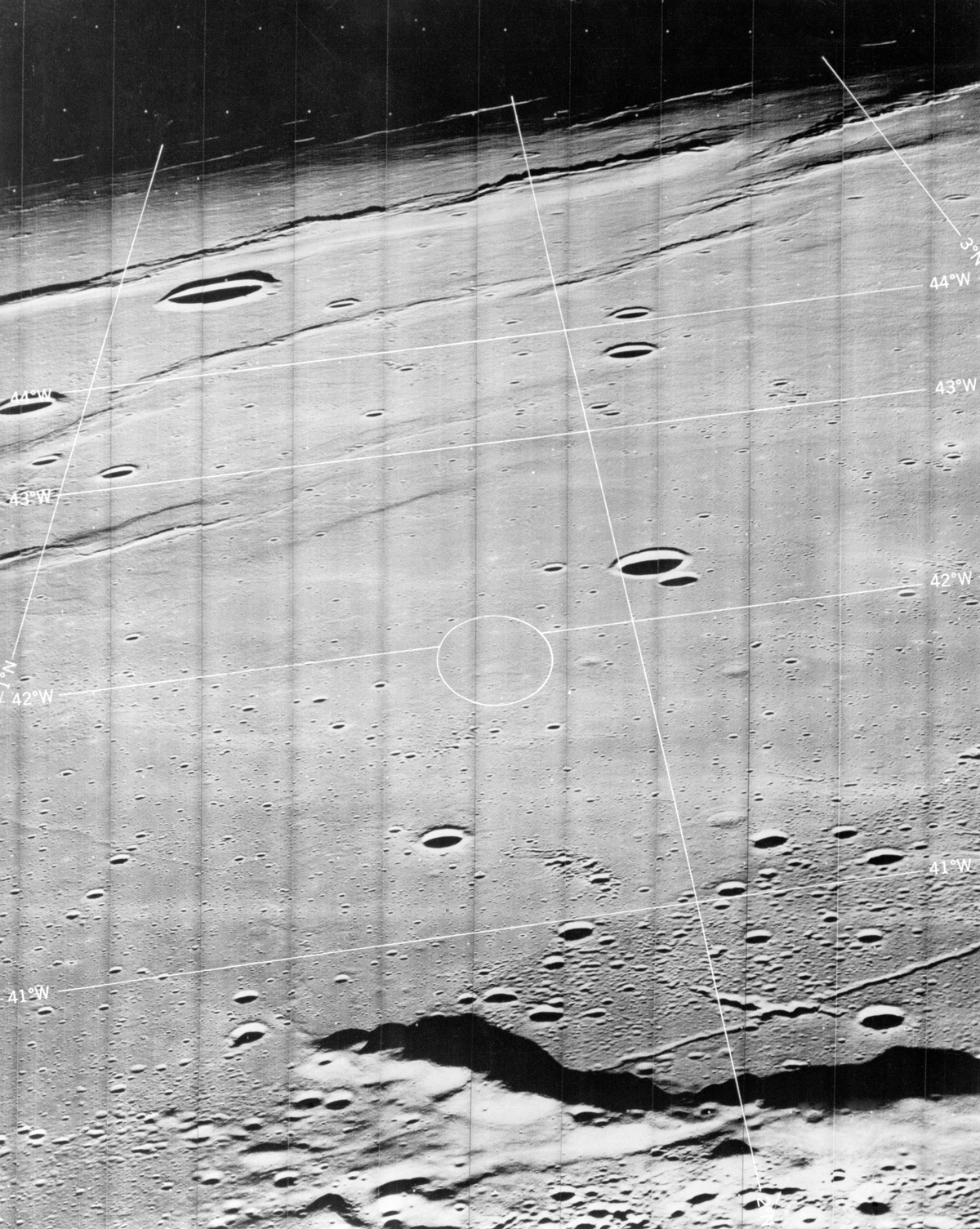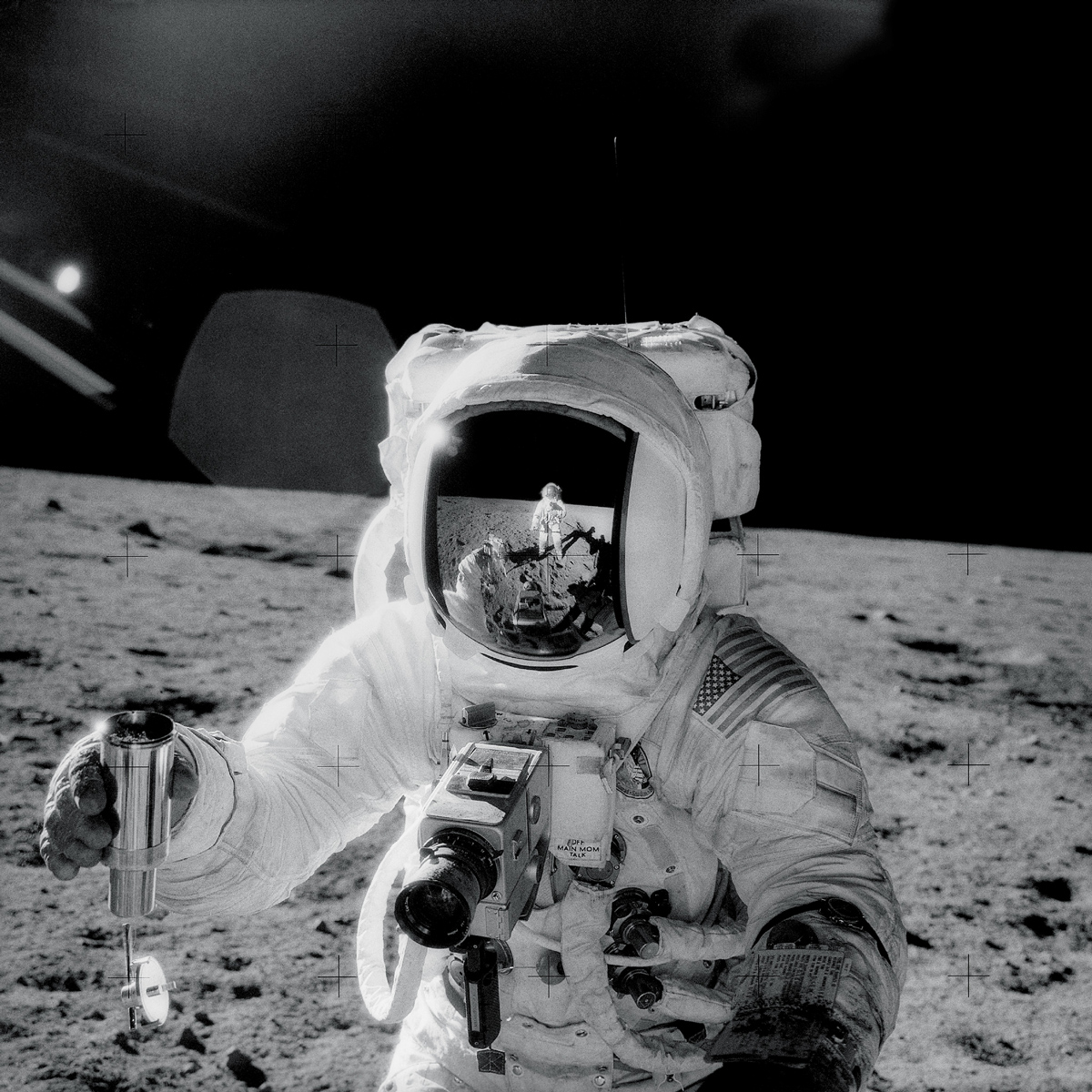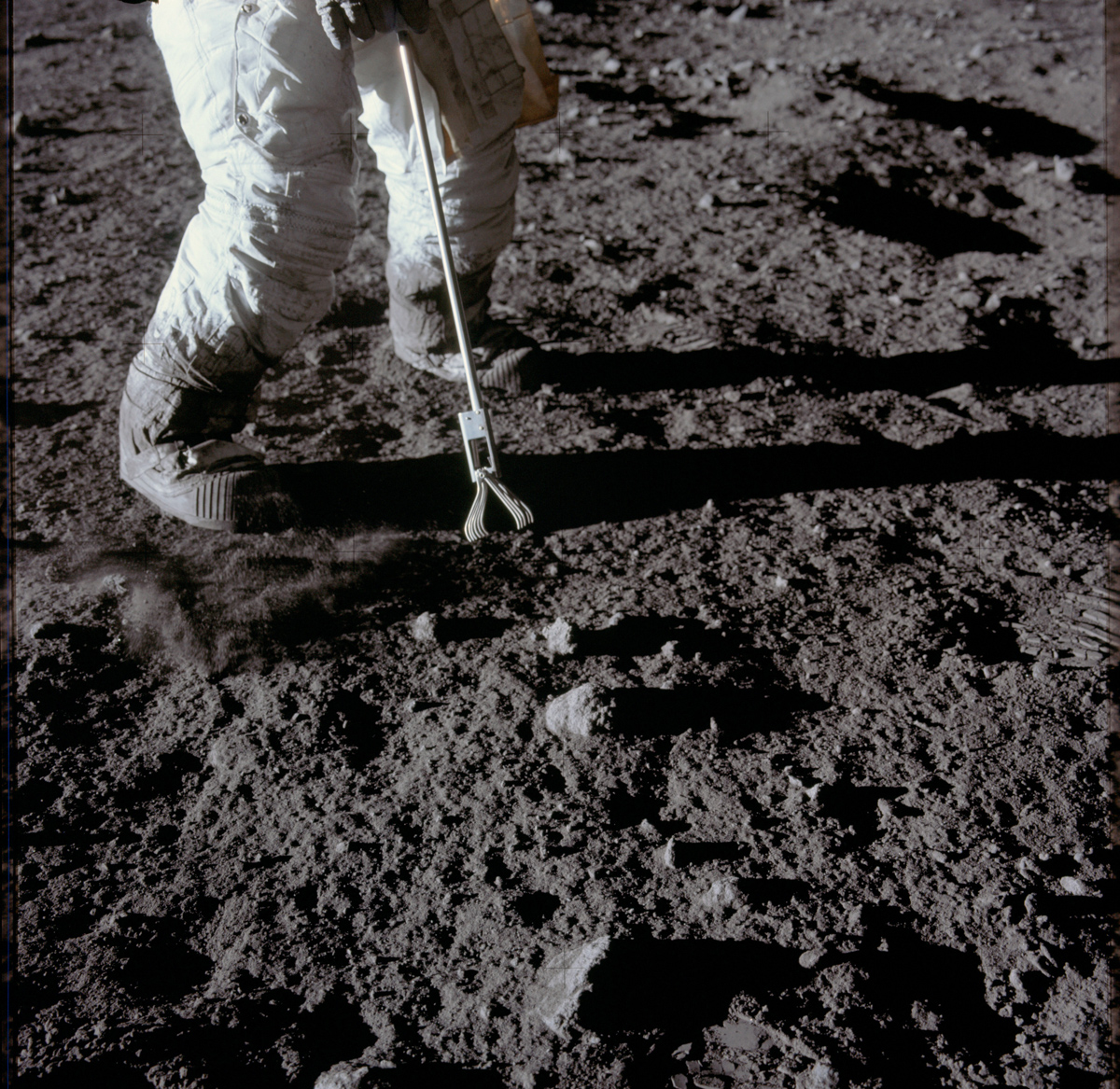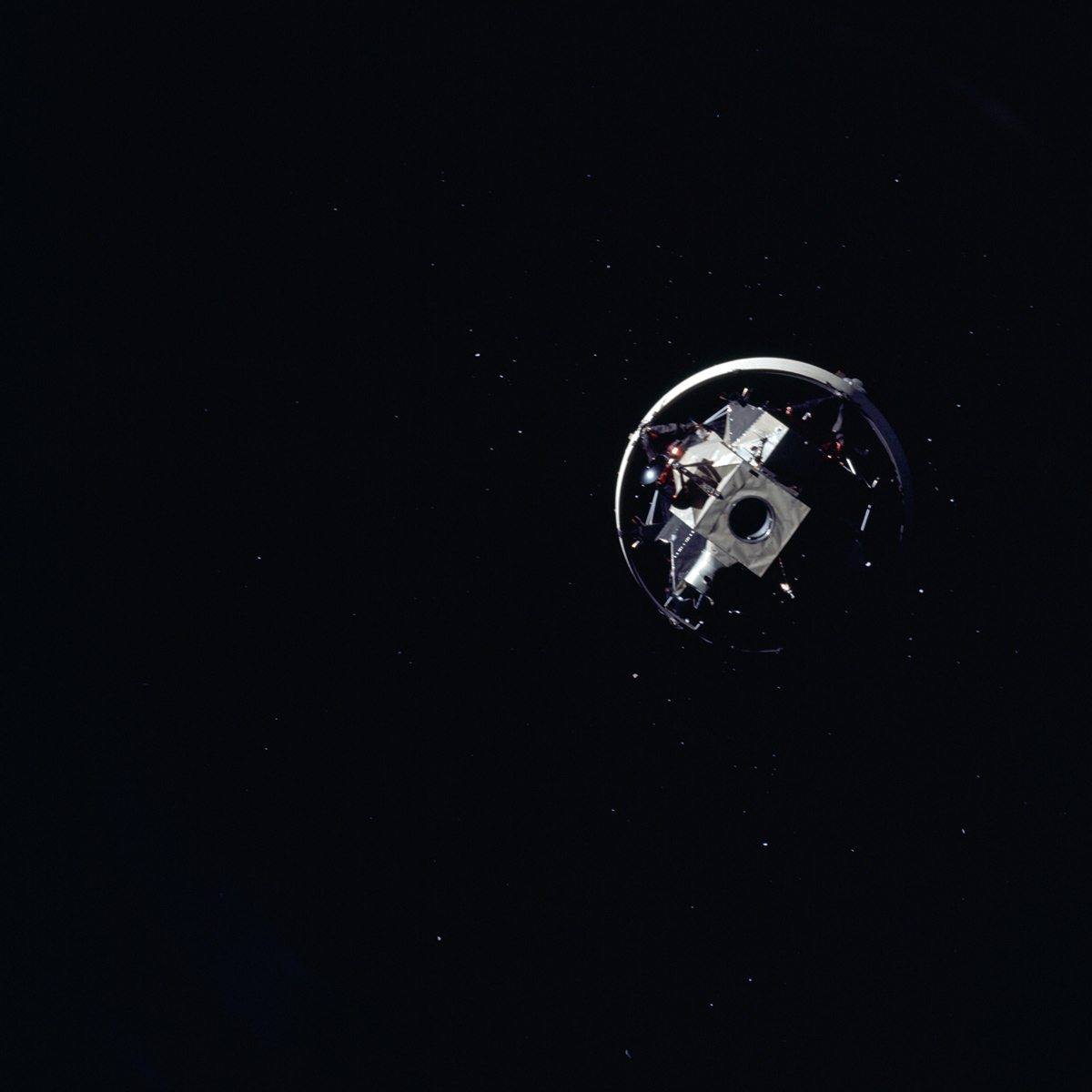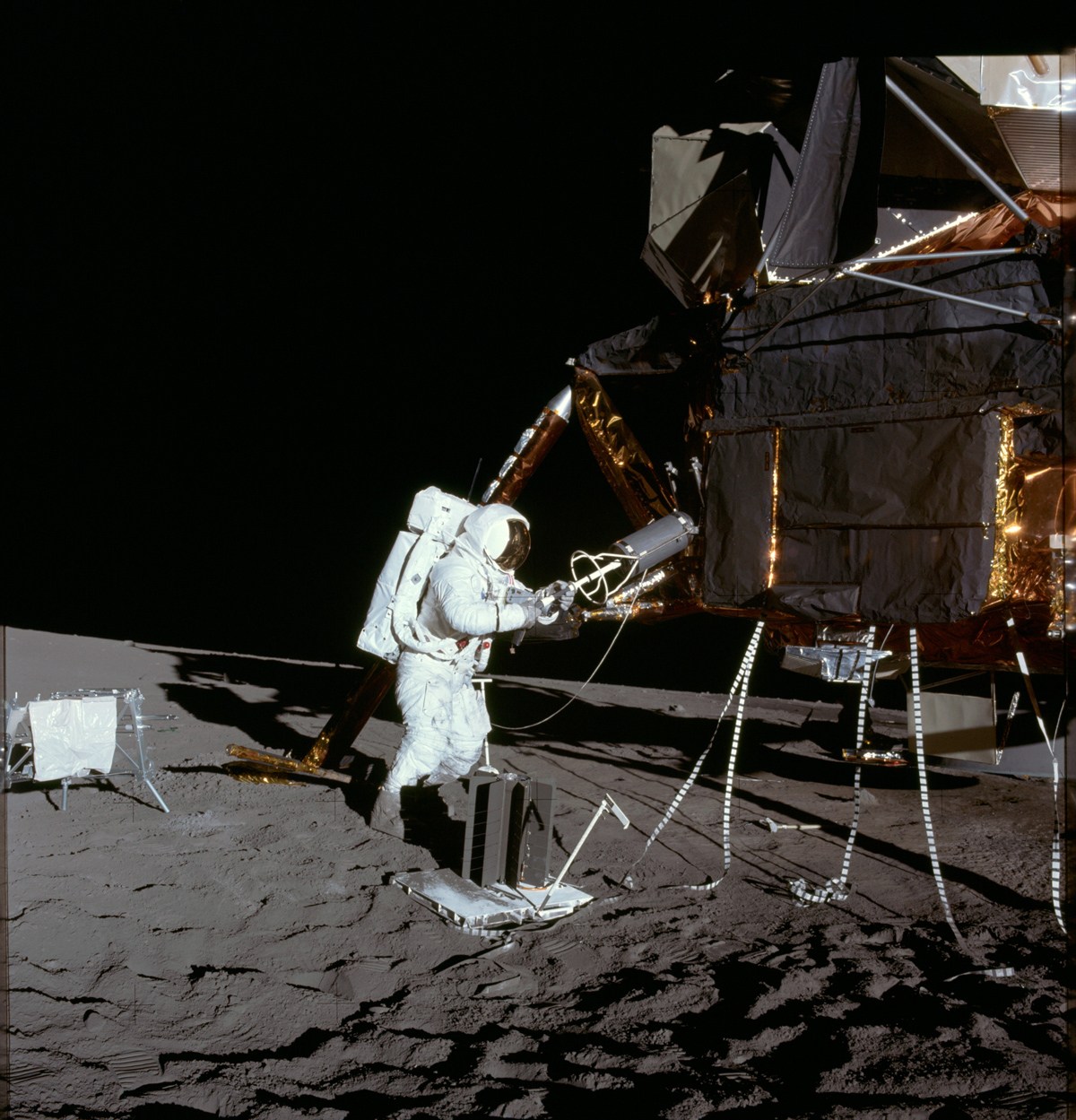Apollo 12 in Pictures: Photos from NASA's Pinpoint Moon Landing Mission
Liftoff!
From Kennedy Space Center's Launch Complex 39 Pad A, the Apollo 12 space vehicle, measuring in at 363-feet tall and made up of Spacecraft 108, Lunar Module 6 and Saturn 507, launched on November 14, 1969, beginning the United States' second lunar landing mission. The prime crew for the Apollo 12 mission consisted of astronauts Charles Conrad Jr., commander; Richard F. Gordon Jr., command module pilot, and Alan L. Bean, lunar module pilot.
Options
During October 1969 planning sessions, NASA teams determine the best landing sites for the Apollo 12 mission. If the launch is postposed until November 16, rather than the prime launch window of November 14, landing on the moon will be in the Sea of Storms area. The target site is noted by the ellipse near the center of the photo. The image used to map the landing site was captured by Lunar Orbiter 3 on February 21, 1967.
Trans-Earth Eclipse
As the Apollo 12 spacecraft travelled back home from its moon adventures, astronauts Charles Conrad Jr., commander; Richard F. Gordon Jr., command module pilot; and Alan L. Bean, lunar module pilot, captured photographs of an eclipse. The Earth moved between the sun and the craft creating the stunning view.
Cosmic Samples
During the November 19-20, 1969 extravehicular activities, astronaut Alan L. Bean, lunar module pilot, and Charles Conrad, Jr., commander, disembarked the Command and Service Modules of the Apollo 12 craft in the Lunar Module and collected lunar soil. Bean shows a sample in a Special Environmental Sample Container as Conrad, reflected in Bean's helmet visor, snaps an image. Astronaut Richard F. Gordon, Jr., command module pilot, stayed aboard the Apollo 12 Command and Service Modules in lunar orbit.
Lunar Geology
Astronauts Charles Conrad Jr., commander, and Alan L. Bean, lunar module pilot, completed extravehicular activities on November 19, 1969, capturing a close-up view of a lunar rock, small crater and a lunar mound. Astronaut Richard F. Gordon Jr., command module pilot, manned the Apollo 12 Command and Service Modules in lunar orbit.
Moon Tools
Astronaut Charles Conrad, Jr., commander, used an Apollo Lunar Hand Tool to gather samples during Apollo 12 extravehicular activities.
Apollo Tech
During the Apollo 12 lunar landing mission, a stereo image of a boot imprint on the lunar surface was taken with an Apollo 35mm stereo close-up camera. The camera was designed to image the highest possible resolution of a small area. The camera was mounted on a walking stick so astronauts Conrad and Bean could simply place it against the object and pull a trigger to capture and image with a flash and at a fixed distance.
Breaking space news, the latest updates on rocket launches, skywatching events and more!
Leaving Our Mark
On November 19, 1969, during the first extravehicular activity, astronaut Charles Conrad, Jr., Apollo 12 commander, releases the United States flag on the lunar surface. Boot prints from the astronauts can be seen in the image as well.
Stages of Lunar Exploration
On the first day of the Apollo 12 lunar landing mission, November 14, 1969, the Lunar Module can be seen still attached to the Saturn V third stage. The Apollo 12 Command and Service Modules have already separated but the Lunar Module extraction has yet to occur.
On the Moon
During the first Apollo 12 extravehicular activity on the moon, astronaut Alan L. Bean, lunar module pilot, transfers the fuel element from the fuel cask on the Lunar Module's descent stage into the Radioisotope Thermoelectric Generator (RTG) using a fuel transfer tool. The RTG provides power for the Apollo Lunar Surface Experiments Package, which is visible next to Bean's leg.
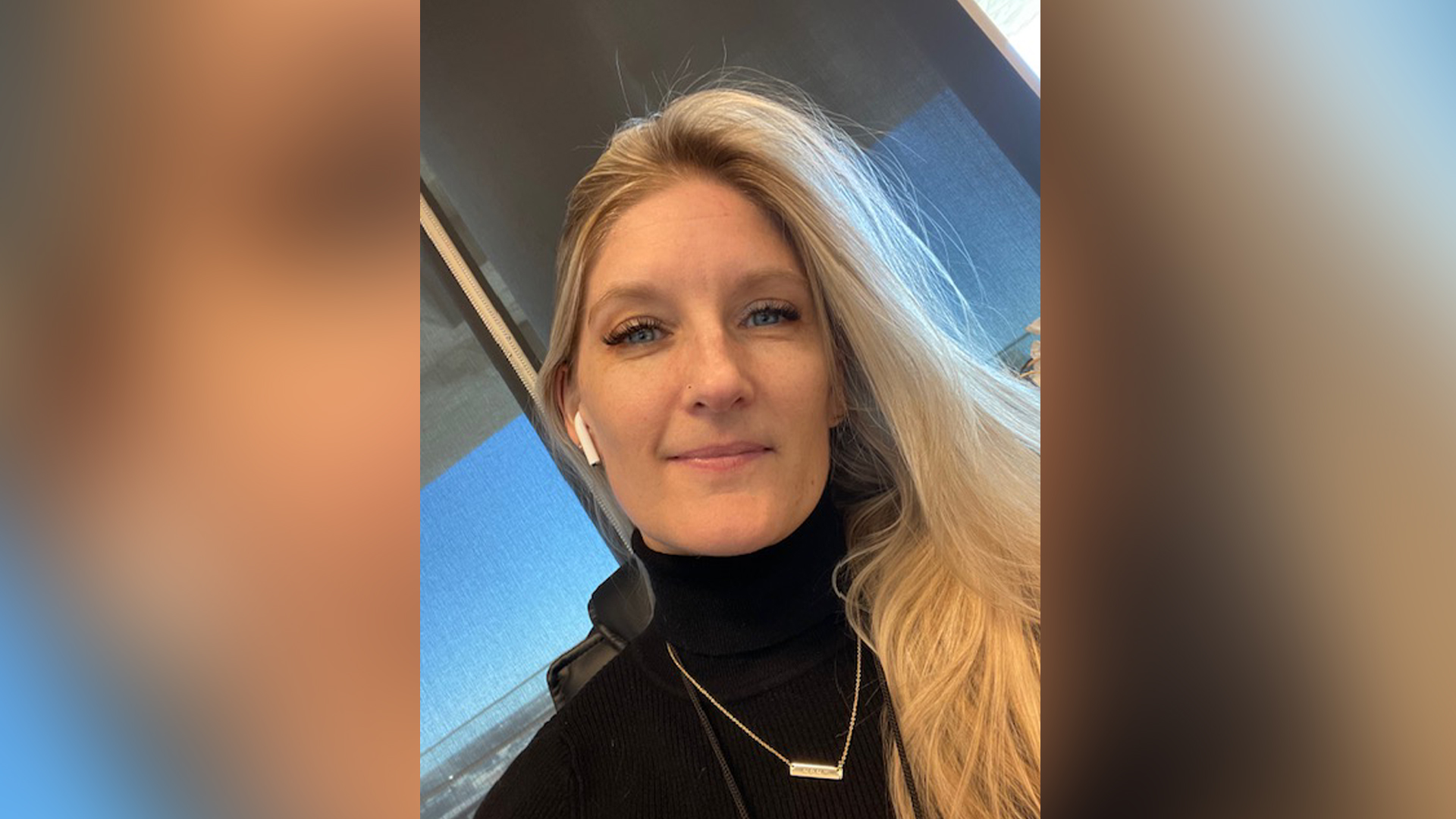
Christine Lunsford joined the Space.com team in 2010 as a freelance producer and later became a contributing writer, covering astrophotography images, astronomy photos and amazing space galleries and more. During her more than 10 years with Space.com, oversaw the site's monthly skywatching updates and produced overnight features and stories on the latest space discoveries. She enjoys learning about subjects of all kinds.

